- All
- Product Management
- News
- Introduction
- Enterprise outlets
- FAQ
- Enterprise Video
- Enterprise Atlas
Probiotic Lactobacillus casei IOB413 and gut health

The Lactobacillus paracasei IOB413 (Lacticaseibacillus paracasei) described in this article was isolated from natural fermented sourdough by Tianjin Chuangyuan Biotechnology Co., Ltd. and was preserved in the General Microbiology Center of the China Microbial Strain Preservation Management Committee (CGMCC) on June 29, 2018, with the preservation number CGMCC No. 16022.
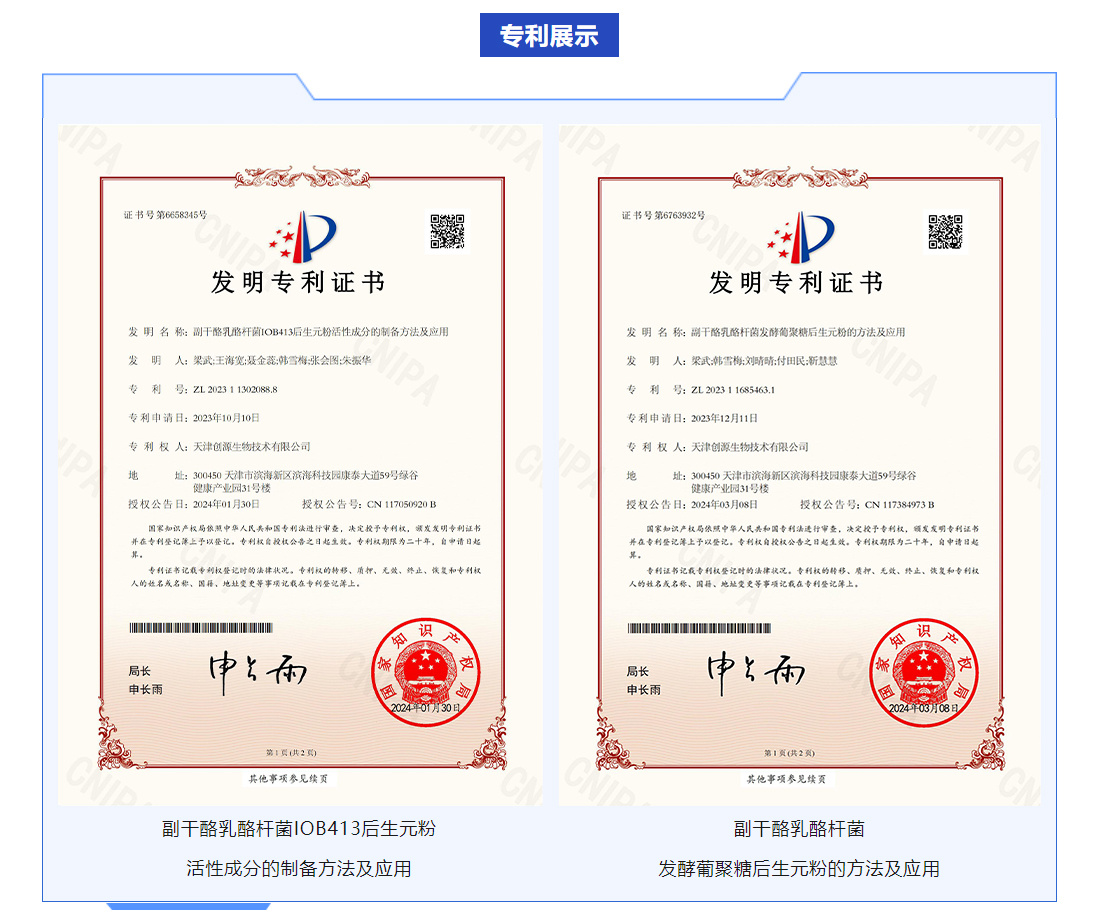
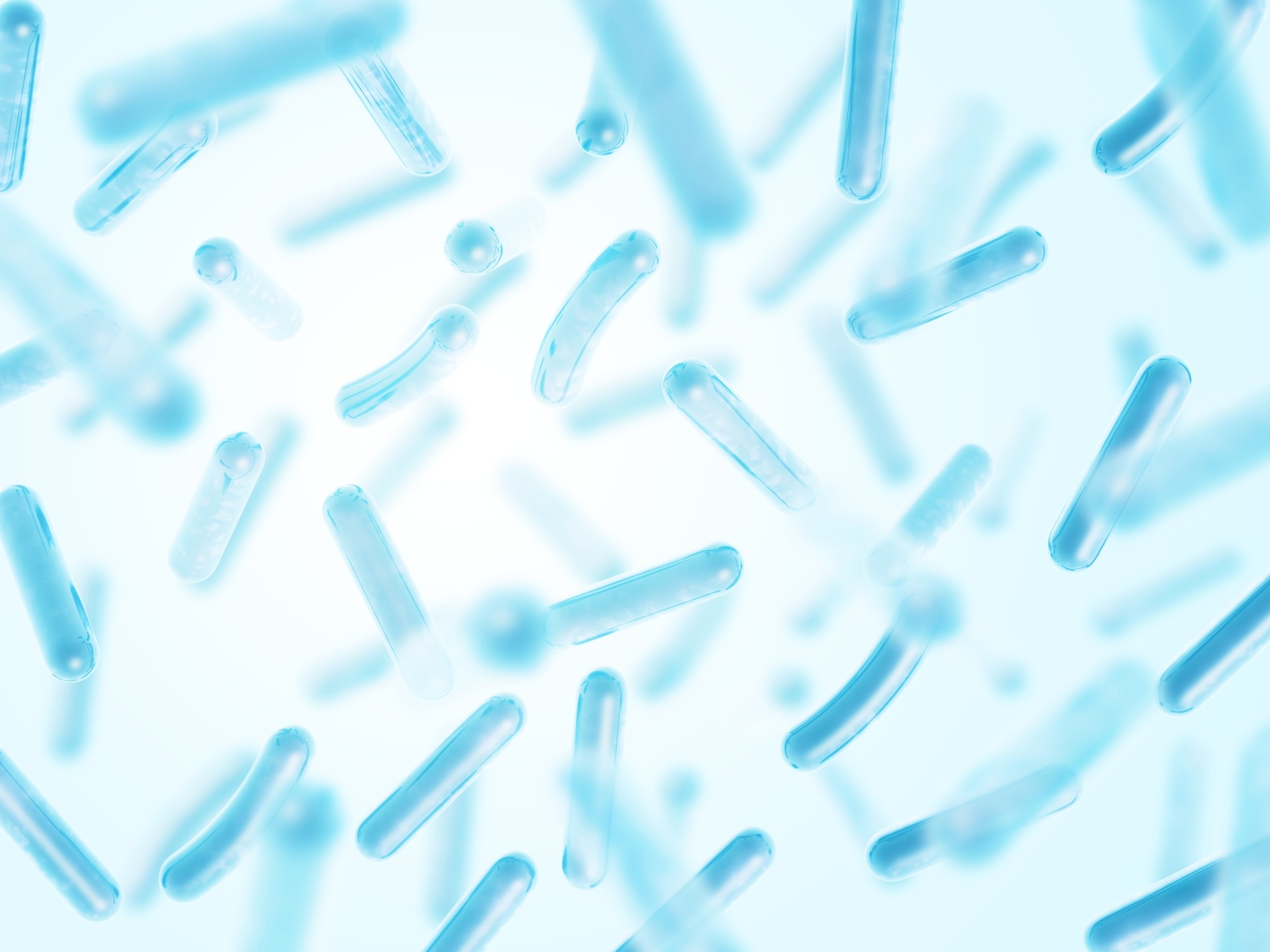
However, the storage and transportation conditions for probiotics are more stringent. Compared to probiotics, postbiotics have advantages such as a longer shelf life, strong post-processing capabilities, and ease of transportation and packaging. Even after entering the human body and undergoing treatment by saliva, gastric acid, etc., they still maintain a high physiological activity.[4]Postbiotics, as a newly emerging micro-ecological preparation in recent years, currently exist in a complementary state with probiotics and are rapidly moving towards commercialization. With the increasing research and application of postbiotics, they are expected to become a new trend in health.[5]Research data shows that the global probiotic market size reached $60.23 billion in 2022, while the domestic probiotic market size was approximately 109.38 billion yuan. In the same year, the global postbiotic supplement market reached $9.5 million, and it is expected to reach $28.3 million by 2032. According to the FMI market forecast report, the annual growth rate of the global postbiotic supplement market is 11.1%, and it is expected that the global postbiotic market will reach a trillion-level scale within five years, while the postbiotic application industry will reach a scale of ten trillion.

Lactobacillus paracasei IOB413 postbiotic powder is prepared using patented technologies such as segmented solid-state fermentation and drying and crushing. After verification through physicochemical tests and animal experiments, it has been proven to inhibit and kill pathogenic bacteria such as Helicobacter pylori and Salmonella enteritidis, showing good application prospects.

Helicobacter pylori, also known as H. pylori, is a bacterium with a high infection rate in the population and can easily cause stomach diseases. The treatment for H. pylori mainly involves using a quadruple therapy with drugs and probiotic therapy, but the excessive use of antibiotics can lead to an imbalance in the normal flora of the body and even cause other gastrointestinal diseases.[6]Probiotics can inhibit the growth of pathogens and also reasonably regulate the imbalance of gut microbiota.
Table 1: Sensitivity experiment of Lactobacillus paracasei IOB413 fermented soybean active products to different proteases.
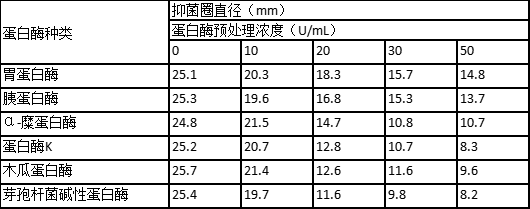
As shown in Table 2, the active substances in the fermented products of Lactobacillus paracasei IOB413 can regulate the balance of gut microbiota and inhibit the growth of Staphylococcus aureus and Helicobacter pylori strains.
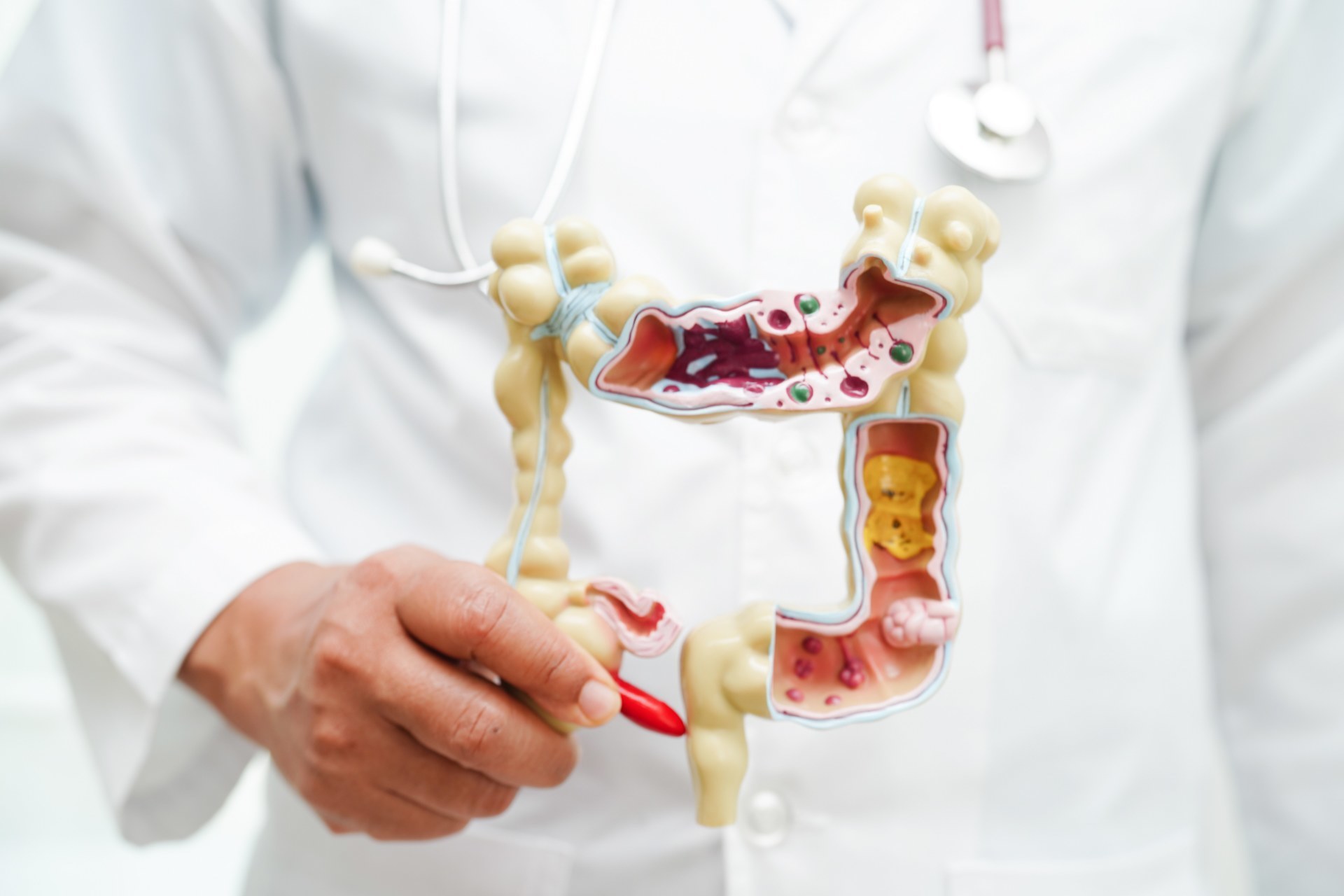
In recent years, due to the accelerated pace of life, increased work pressure, irregular diet, and lack of exercise, the incidence of intestinal diseases has continued to rise. The treatment and conditioning time for intestinal diseases is long, and long-term medication can easily lead to side effects and drug resistance. More and more researchers are beginning to try to restore the balance of gut microecology through postbiotics.Lactobacillus paracasei IOB413 postbiotic powder can regulate gut health, with many significant advantages such as safety in use, no residues, no drug resistance, promoting nutrient absorption, regulating gut microbiota balance, and improving gut microecology.
Table 3: Nutritional component testing results.
As shown in Table 3, during the fermentation of soybeans and soybean globulin polysaccharides, Lactobacillus paracasei IOB413 continuously accumulates bioactive substances such as soybean peptides, polysaccharides, and organic acids in the postbiotic powder obtained from fermentation.

From Figures 1 and 2, it can be seen that compared to soybean globulin polysaccharides, both the postbiotic powder from fermented soybeans and the postbiotic powder from fermented soybean globulin polysaccharides by Lactobacillus paracasei IOB413 can reduce allergenicity. At the same time, the molecular weight distribution of the protease digestion products of the postbiotic powder from fermented soybean globulin polysaccharides by Lactobacillus paracasei IOB413 has changed significantly, improving the digestibility of the product.1. Animal verification experiment - Mouse weight changes.
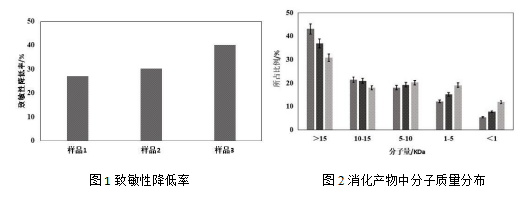
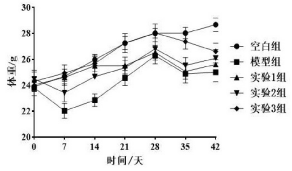
2. Animal verification experiment - Mouse intestinal inflammation factor TNF-α.
如图3所示,与模型组相比,小鼠体重有增加趋势,且副干酪乳酪杆菌IOB413发酵大豆球蛋白葡聚糖后生元粉组小鼠增加较为明显。
2.动物验证实验-小鼠肠道炎症因子TNF-α
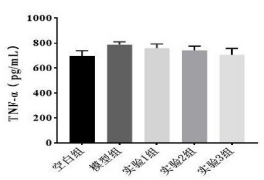
Figure 4 Mouse intestinal inflammatory factor TNF-α
3. Animal validation experiment - Mouse intestinal inflammatory factor IL-6
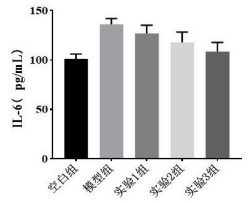
Figure 5 Mouse intestinal inflammatory factor IL-6
4. Animal validation experiment - Mouse intestinal inflammatory factor IL-1β
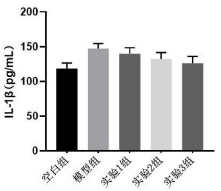
Figure 6 Mouse intestinal inflammatory factor IL-1β
5. Animal validation experiment - Expression level of tight junction protein ZO-1 in mouse colon
 Figure 7 Expression level of tight junction protein ZO-1 in mouse colon
Figure 7 Expression level of tight junction protein ZO-1 in mouse colon
6. Animal validation experiment - Expression level of Occludin in mouse colon
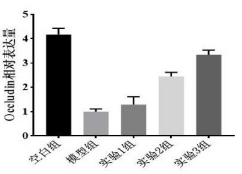
Figure 8 Expression level of Occludin in mouse colon
As shown in Figures 7 and 8, after intervention with soybean globulin-dextran, and postbiotic powder fermented with Lactobacillus paracasei IOB413, the relative expression levels of ZO-1 and Occludin increased, indicating that both fermented products can effectively promote the healthy growth of mouse intestines, with the postbiotic powder fermented with Lactobacillus paracasei IOB413 showing significant effects.
7. Animal validation experiment - Expression level of MUC-2 in mouse colon

Figure 9 Expression level of MUC-2 in mouse colon
In summary, the postbiotic powder from Lactobacillus paracasei IOB413 has a certain intervention effect on mice infected with Helicobacter pylori.

Related News


